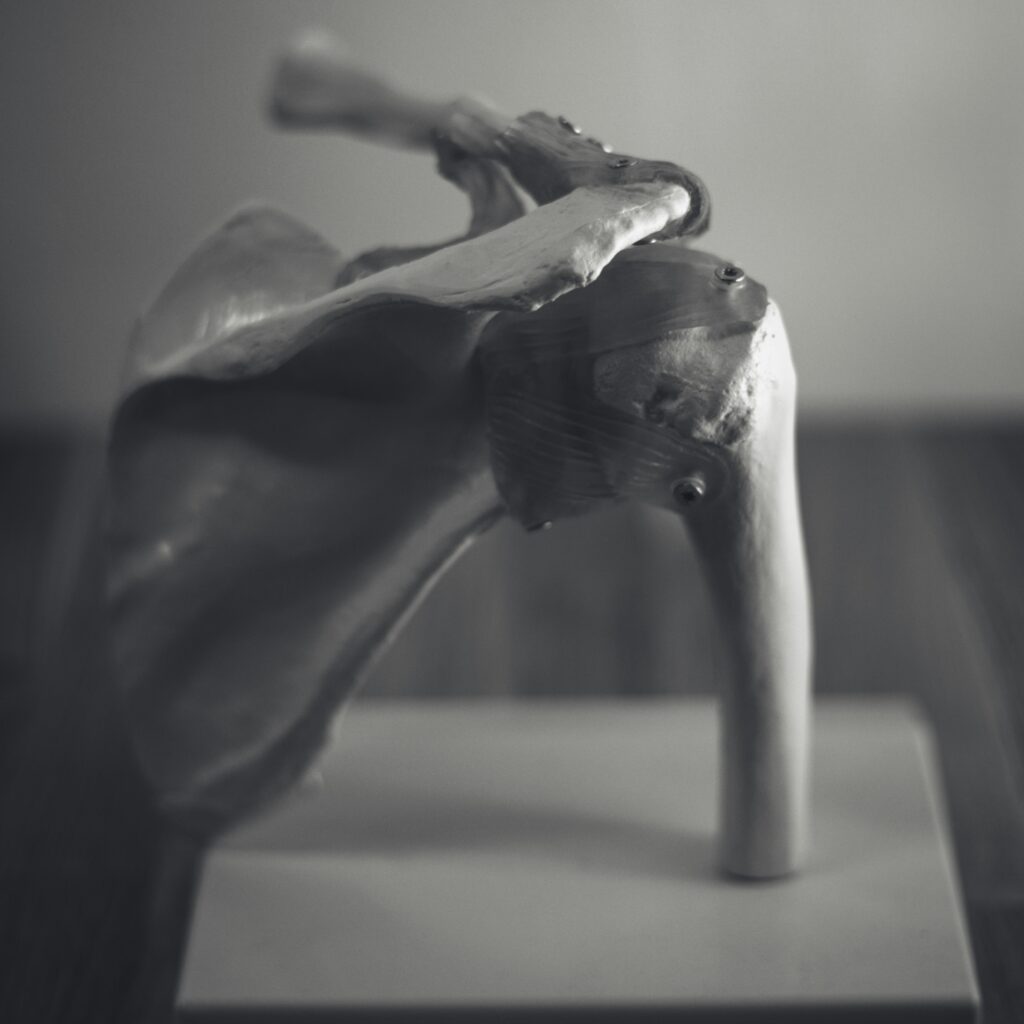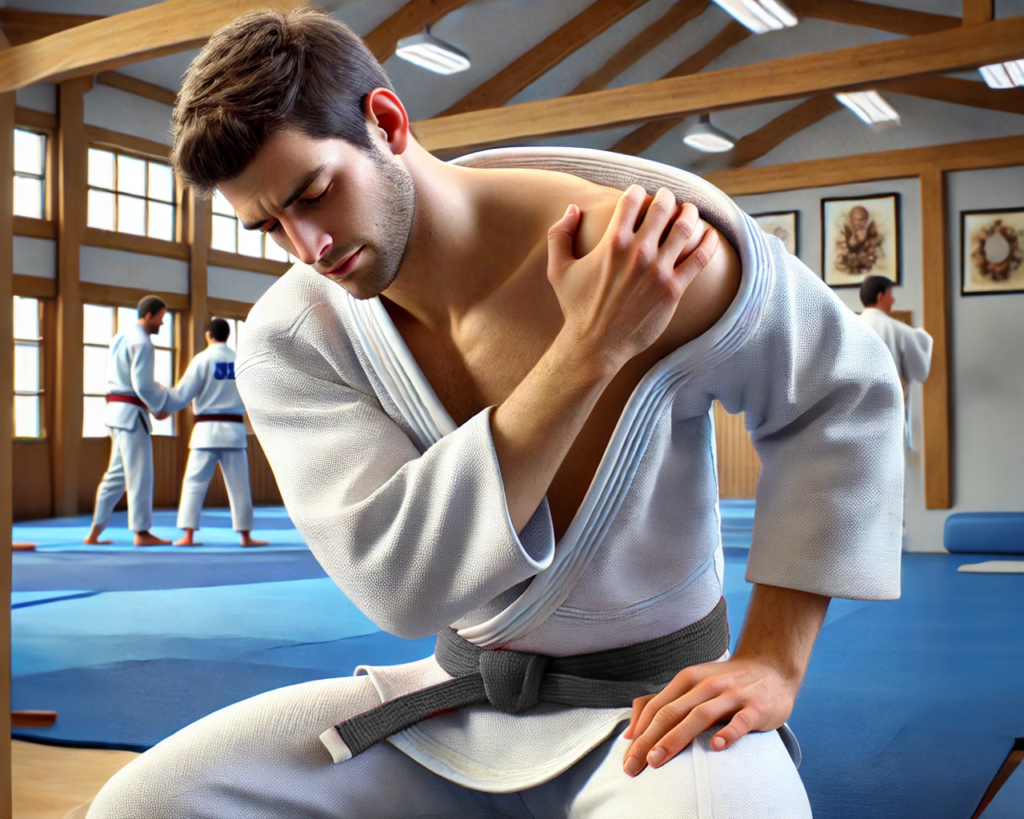💊 Shoulder Dislocation
A shoulder dislocation happens when the humerus (upper arm bone) is forced out of the shoulder socket (glenoid), typically due to a traumatic event like a fall, collision, or a submission.
The shoulder is a bit of a complex joint, among the initiated we call it a ball-and-socket joint – which allows the greatest range of motion of any joint in the body, including flexion, extension, abduction, adduction, rotation, pronation, and a bunch of other stuff. The problem is that this unique mobility comes at the cost of stability, making it inherently prone to dislocation.

Shoulder Anatomy
The shoulder joint is composed of three main bones: the humerus (upper arm bone), the scapula (shoulder blade), and the clavicle (collarbone). It is stabilized by a complex network of muscles, tendons, and ligaments, including the rotator cuff, which holds the head of the humerus in the shallow glenoid socket, and the labrum, a ring of cartilage that deepens the socket.
Check it out:
Types of Shoulder Dislocations
Dislocations can be categorized into three main types based on the direction of displacement:
- Anterior Dislocation: The most common type, where the humerus moves forward out of the socket, often caused by a forceful blow or a fall on an outstretched arm. This accounts for about 95% of shoulder dislocations.
- Posterior Dislocation: Less common, occurring when the humerus moves backward, usually due to direct trauma to the front of the shoulder.
- Inferior Dislocation: Rare and usually resulting from a hyper-abduction injury, where the arm is forced upwards excessively, causing the humerus to displace downward.
You Popped Your Shoulder Out. Now What?
A lot of times a dislocated shoulder will pop back in right away on its own, like by the time you feel pain the shoulder is already back in its place. But that’s not what we are talking about here. What to do when it pops out and stays out? Well, the first order of business is to pop it back in. Popping a shoulder back in can easily be done at an urgent care facility. Don’t let anyone who doesn’t know what they are doing mess with it. The shoulder joint has nerves, tendons, ligaments, and tendons coursing through it, and the last thing you want is your blue belt buddy causing permanent damage after watching a Youtube video on how to pop a shoulder back in.
After that, rest and rehab as prescribed by your doc based on the extent of the damage.
🤔 Why you need to know:
Because a lot of people will volunteer to pop your shoulder back in without really knowing what they are doing. Don’t let them. Seek professional help.
Shoulder dislocations are not only painful but can also lead to long-term issues including chronic instability- where the shoulder is prone to repeated dislocations, labral tears, damage to the rotator cuff, and development of arthritis in the joint over time. Repeated dislocations can lead to stretching or tearing of the ligaments and capsule, making it difficult to maintain joint stability and eventually you will need surgery.
- Prevention Tips: Strengthen the rotator cuff and scapular muscles through targeted exercises, maintain good posture, and avoid activities that put excessive strain on the shoulder joint, especially if you’ve had a previous dislocation. I have dislocated both shoulders multiple times and after spending some time strengthening the joints it is no longer a problem.
Here is a video of a shoulder being popped back in:
🧠 Trivia:
The earliest documented case of shoulder dislocation was treated over 3,000 years ago by Egyptian physicians.



